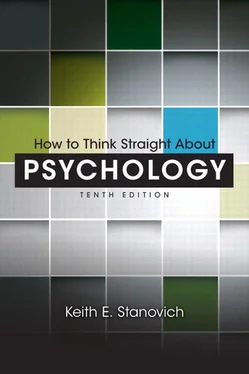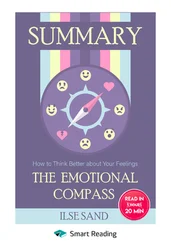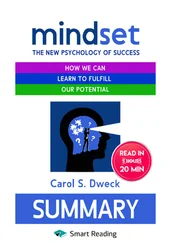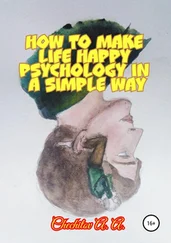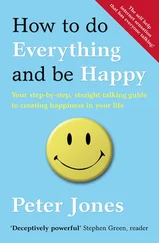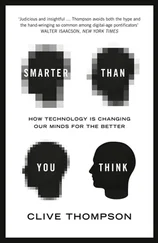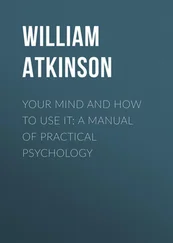Keith Stanovich - How to Think Straight About Psychology
Здесь есть возможность читать онлайн «Keith Stanovich - How to Think Straight About Psychology» весь текст электронной книги совершенно бесплатно (целиком полную версию без сокращений). В некоторых случаях можно слушать аудио, скачать через торрент в формате fb2 и присутствует краткое содержание. Год выпуска: 2012, ISBN: 2012, Издательство: Pearson, Жанр: Психология, Прочая научная литература, на английском языке. Описание произведения, (предисловие) а так же отзывы посетителей доступны на портале библиотеки ЛибКат.
- Название:How to Think Straight About Psychology
- Автор:
- Издательство:Pearson
- Жанр:
- Год:2012
- ISBN:978-0-205-91412-8
- Рейтинг книги:5 / 5. Голосов: 1
-
Избранное:Добавить в избранное
- Отзывы:
-
Ваша оценка:
- 100
- 1
- 2
- 3
- 4
- 5
How to Think Straight About Psychology: краткое содержание, описание и аннотация
Предлагаем к чтению аннотацию, описание, краткое содержание или предисловие (зависит от того, что написал сам автор книги «How to Think Straight About Psychology»). Если вы не нашли необходимую информацию о книге — напишите в комментариях, мы постараемся отыскать её.
How to Think Straight About Psychology — читать онлайн бесплатно полную книгу (весь текст) целиком
Ниже представлен текст книги, разбитый по страницам. Система сохранения места последней прочитанной страницы, позволяет с удобством читать онлайн бесплатно книгу «How to Think Straight About Psychology», без необходимости каждый раз заново искать на чём Вы остановились. Поставьте закладку, и сможете в любой момент перейти на страницу, на которой закончили чтение.
Интервал:
Закладка:
This book, then, is directed not at potential researchers in psychology but at a much larger group: the consumers of psychological information. The target audience is the beginning psychology student and the general reader who have encountered information on psychological issues in the general media and have wondered how to go about evaluating its validity.
This book is not a standard introductory psychology text. It does not outline a list of facts that psychological research has uncovered. Indeed, telling everyone to take an introductory psychology course at a university is probably not the ultimate solution to the inaccurate portrayal of psychology in the media. There are many laypeople with a legitimate interest in psychology who do not have the time, money, or access to a university to pursue formal study. More importantly, as a teacher of university-level psychology courses, I am forced to admit that my colleagues and I often fail to give our beginning students a true understanding of the science of psychology. The reason is that lower-level courses often do not teach the critical analytical skills that are the focus of this book. As instructors, we often become obsessed with “content”—with “covering material.” Every time we stray a little from the syllabus to discuss issues such as psychology in the media, we feel a little guilty and begin to worry that we may not cover all the topics before the end of the term.
Consider the average introductory psychology textbook. Many now contain between 600 and 800 multicolumned pages and reference literally hundreds of studies in the published literature. Of course, there is nothing wrong with such books containing so much material. It simply reflects the increasing knowledge base in psychology. There are, however, some unfortunate side effects. Instructors are often so busy trying to cram their students full of dozens of theories, facts, and experiments that they fail to deal with some of the fundamental questions and misconceptions that students bring with them to the study of psychology. Rather than dealing directly with these misconceptions, the instructors (and the introductory textbook authors) often hope that if students are exposed to enough of the empirical content of psychology, they will simply induce the answers to their questions. In short, the instructors hope that students will recognize the implicit answers to these questions in the discussions of empirical research in several content areas. All too often this hope is frustrated. In a final review session—or in office hours at the end of the term—instructors are often shocked and discouraged by questions and comments that might have been expected on the first day of the course but not after 14 weeks: “But psychology experiments aren’t real life; what can they tell us?”; “Psychology just can’t be a real science like chemistry, can it?”; “But I heard a therapist on TV say the opposite of what our textbook said”; “I think this theory is stupid—my brother behaves just the opposite of what it says”; “Psychology is nothing more than common sense, isn’t it?”; “Everyone knows what anxiety is—why bother defining it?” For many students, such questions are not implicitly answered merely by a consideration of the content of psychology. In this book, I deal explicitly with the confusions that underlie questions and comments such as these.
Unfortunately, research has shown that the average introductory psychology course does surprisingly little to correct some of entering students’ misconceptions about the discipline (Keith & Beins, 2008; Kowalski & Taylor, 2009; Standing & Huber, 2003; Taylor & Kowalski, 2004). This unfortunate fact provides the rationale for this book. Psychology students need explicit instruction in the critical thinking skills that will make them into independent evaluators of psychological information.
Years after students have forgotten the content of an introductory psychology course, they will still use the fundamental principles covered in this book to evaluate psychological claims. Long after Erikson’s stages of development have been forgotten, students will be using the thinking tools introduced in this text to evaluate new psychological information encountered in the media. Once acquired, these skills will serve as lifelong tools that will aid in the evaluation of knowledge claims. First, they provide the ability to conduct an initial gross assessment of plausibility. Second, these skills provide some criteria for assessing the reliability of “expert” opinion. Because the need to rely on expert opinion can never be eliminated in a complex society, the evaluation of an expert’s credibility becomes essential to knowledge acquisition. Although these critical thinking skills can be applied to any discipline or body of knowledge, they are particularly important in the area of psychology because the field is so often misrepresented in the general media.
Many psychologists are pessimistic about any effort to stem the tide of misinformation about their discipline. Although this pessimism is, unfortunately, often justified, this “consumer’s guide” to psychology was motivated by the idea that psychologists must not let this problem become a self-fulfilling prophecy.
Although I have welcomed the opportunity to prepare several editions of How to Think Straight About Psychology , it is unfortunately true that the reasons for the book’s existence are just as applicable today as they were when I wrote the first edition. Media presentations of psychology are just as misleading as they ever were, and students in introductory psychology courses enter with as many misconceptions as they ever did. Thus, the goals of all subsequent editions have remained the same. These goals are shared by an increasing number of psychology instructors. Stanford University psychologist Roger Shepard (1983) echoed all the concerns that motivated the writing of the first edition of this text: “Although most undergraduate psychology students may not go on to scientific careers, one hopes that they acquire some facility for the critical evaluation of the incomplete, naive, confused, or exaggerated reports of social science ‘findings’ to which they will continue to be exposed by the popular media. . . . Widespread notions that human behavior and mental phenomena can be adequately understood through unaided common sense or, worse, by reference to nonempirical pseudosciences, such as astrology, present us with a continuing challenge” (p. 855).
The goal of this book is to present a short introduction to the critical thinking skills that will help students to better understand the subject matter of psychology and better understand events in the world in which they live.
Acknowledgments
Many of the individuals I have acknowledged in earlier editions continue to contribute ideas for the book. However, I must single out Richard West of James Madison University, who has been a most valuable continuing contributor to the book’s evolution. A humane scholar and a true friend, his intellectual and emotional support is much appreciated.
Several other scholars have provided valuable feedback on this and earlier editions. These include Wayne Bartz, American River College; Christopher Bauer, University of New Hampshire; Ludy Benjamin, Texas A&M University; Angela M. Birkhead-Flight, University of Cincinnati; Virginia Blankenship, University of Northern Arizona; Edward C. Chang, Northern Kentucky University; Michael Choban, West Virginia Wesleyan University; James Clark, University of Winnipeg; Jim Coan, University of Arizona; Ellen Cole, Alaska Pacific University; Ellen Cotter, Georgia Southwestern State University; Anne Cunningham, University of California, Berkeley; Ian Deary, University of Edinburgh; Julie Deisinger, Saint Xavier University; David DiBattista, Brock University; Wallace Dixon, Heidelberg College; Mark Fineman, Southern Connecticut State University; Herbert Fink, SUNY–Brockport; Heinz Fischer, Long Beach City College; Ronald Gandelman, Rutgers University; Michael Gasser, University of Northern Iowa; Traci A. Giuliano, Southwestern University; William Graziano, Purdue University; Nancy J. Gussett, Baldwin-Wallace College; Gordon Hammerle, Adrian College; Randy Hansen, Oakland University; William L. Hathaway, Regent University; George Heise, Indiana University; Albert Heldt, Grand Rapids Junior College; Dori Henderson, Metropolitan State University; George Howard, University of Notre Dame; Barry Kendall; Bernie Koenig, Fanshawe College; Victor Koop, Goshen College; Andy Kwong, University of New South Wales; P. A. Lamal, University of North Carolina, Charlotte; Stephen Louisell, Kalamazoo Community College; Gwen Lupfer-Johnson, University of Alaska, Anchorage; Margaret Matlin, State University of New York-Geneseo; Douglas Mook, University of Virginia; Timothy Moore, York University; Edward Morris, University of Kansas; Joseph E. Morrow, California State University at Sacramento; Michael O’Boyle, Iowa State University; Blaine Peden, University of Wisconsin, Eau Claire; John F. Pfister, Dartmouth College; Sam Rakover, University of Haifa; Richard Redding, Hahneman University; Michael Ross, University of Waterloo; John Ruscio, Elizabethtown College; Walter Sa, Grand Valley State University; Allen Salo, University of Maine at Presque Isle; Frank Schieber, University of South Dakota; Jillene Grover Seiver, Bellevue College; Marjorie Semonick, University of Minnesota; David Share, University of Haifa; Jeffrey Sherman, Northwestern University; Linda Siegel, University of British Columbia; Norman Silverman, University of Illinois, Chicago; Frank Smoll, University of Washington; Paul Solomon, Williams College; Mike Stadler, University of Missouri; Maggie Toplak, York University; Larry Vandervert, Spokane Falls Community College; John Vokey, University of Lethbridge; Carol Wade, College of Marin; Marty Wall, University of Toronto; Barbara Wanchisen, Baldwin-Wallace College; Toni G. Wegner, University of Virginia; Edward Wisniewski, Northwestern University; Murray S. Work, California State University at Sacramento; and Edward Zuckerman, Guilford Press.
Читать дальшеИнтервал:
Закладка:
Похожие книги на «How to Think Straight About Psychology»
Представляем Вашему вниманию похожие книги на «How to Think Straight About Psychology» списком для выбора. Мы отобрали схожую по названию и смыслу литературу в надежде предоставить читателям больше вариантов отыскать новые, интересные, ещё непрочитанные произведения.
Обсуждение, отзывы о книге «How to Think Straight About Psychology» и просто собственные мнения читателей. Оставьте ваши комментарии, напишите, что Вы думаете о произведении, его смысле или главных героях. Укажите что конкретно понравилось, а что нет, и почему Вы так считаете.
